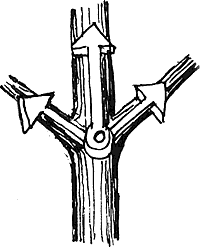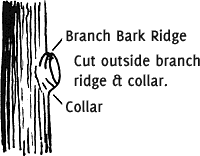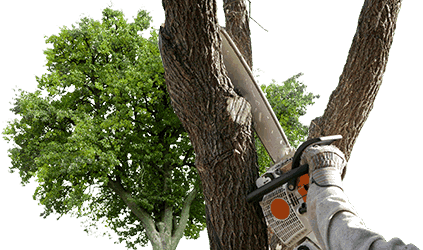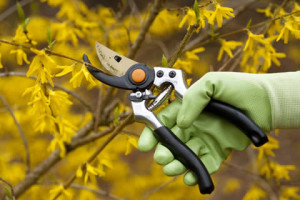Here are some tips for good pruning. Always start by inspecting top of the tree and then work down.
Remember the ⅓ and ¼ Rules for Pruning

- Don’t remove more than ¼ of a tree’s top in a season
- The main side branches should be at least ⅓ smaller than the diameter of the tree trunk.
- For most trees that lose their leaves, don’t prune up from the bottom any more than ⅓ of the tree’s total height.
- Try to encourage side branches that form angles, that are ⅓ off vertical or branches that form “10 o’clock” or “2 o’clock” angles with the trunk.
- Most trees should have a single trunk. Identify the best leader and later branches before you begin pruning and remove defective parts before pruning for form.
- Don’t worry about protecting pruning cuts. For aesthetics, you may feel better painting large wounds but it doesn’t prevent or reduce decay.
- Keep tools sharp. One-hand pruning shears with curved blades work best on young trees.
- For high branches use a pole pruner. A major job on a big tree should be done by a professional tree expert.
- For larger branches, cut outside the branch bark and ridge collar (swollen area). Do not leave a protruding stub. If the limb is too small to have formed a collar cut close.
- When simply shortening a small branch, make the cut at a lateral bud or another lateral branch. Favor a bud that will produce a branch that will grow in desired direction (usually outward). The cut should be sharp and clean and made at a slight angle about ¼ inch beyond the bud.





Comments are closed.